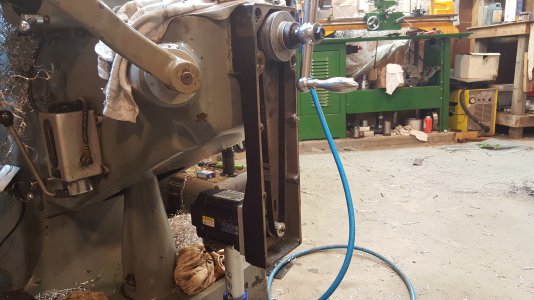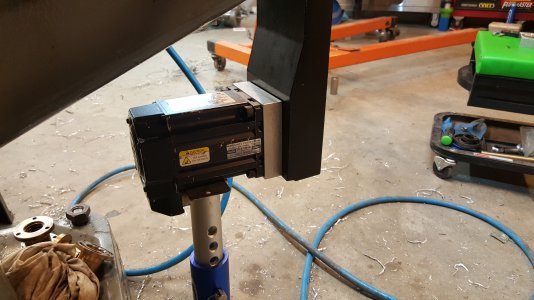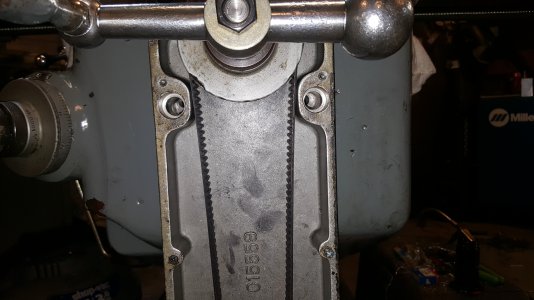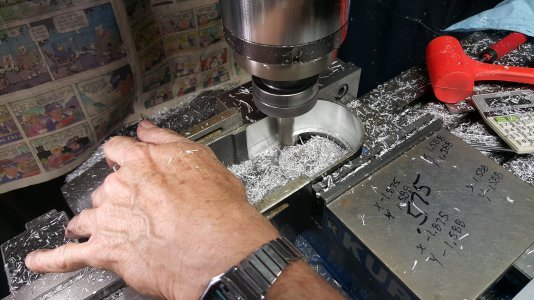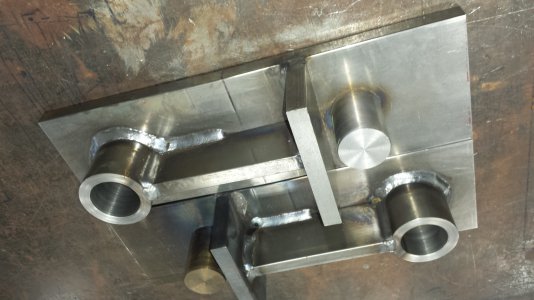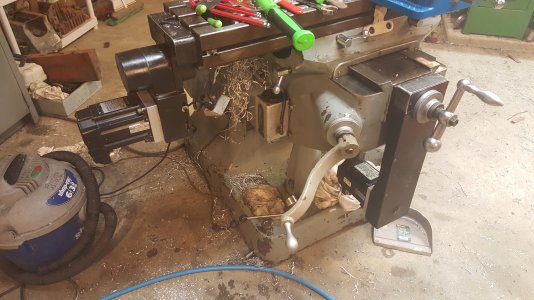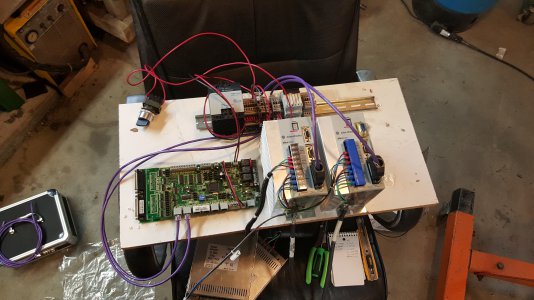He has an AGE2 controller that may be why, but I asked if he could run it continuous without having to stop between passes and have the controller just cut .015 per pass and have it repeat until say .075 was removed, he said he couldn't do that, maybe it was because of the part being machined and not knowing what exactly the end dimension needed was. We just cut it until 'looks good enough' pretty neat how he setup the y axis cuts, they were an angled cuts, he used a 18 inch ruler and set it at an angle offset to the pulley diameters and took some various measurements and programmed them in, then hit Look At program and there were two angled lines, he had picked up on the bore for the bearings as his zeros.
So he changed the cutter diameter to a smaller size in the program to make it cut .0125 each pass, hitting go each time, used a .75 cutter and ended telling the controller it was a .575, then lowered the z to cut the rest of the wall and told it It had a .580 cutter so it wouldn't rub on the shank, the cutter wasn't long enough to cut the entire wall depth.


